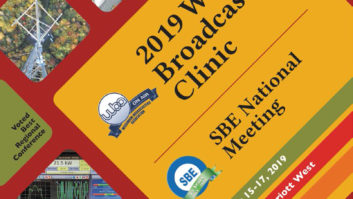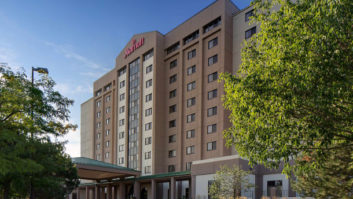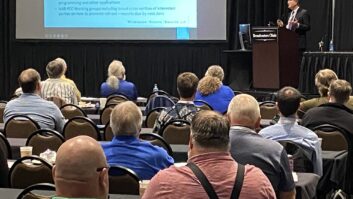
The Wisconsin Broadcasters Clinic, Oct. 15–17, is a highly anticipated annual event for radio broadcasters. Like a miniature NAB Show it offers a wealth of information from a show floor along with useful sessions. Radio World is previewing several of those upcoming sessions.
Tim Wright is a senior engineer for the Cumulus Radio Station Group in Chicago. He’s taking a look at the using the Raspberry Pi computer system in a broadcast environment in “Nuts and Bolts: Building the Perfect Pi,” Oct. 15, 7 p.m.
Radio World: The Raspberry Pi is still unknown to a lot of radio broadcast engineers. What is it and how can it be of use in a radio broadcast environment?
Tim Wright: The Raspberry Pi is a single board SOC (system on a chip) computer that is about the size of a deck of cards. It runs a ARMCore version of Debian Linux in a standard configuration but can also run Ubuntu Linux, several other more obscure OSes, and Windows 10 IOT (If you like the Microsoft [non]security model). The basic Raspberry Pi model lists at $35 US so it is a very cost effective solution for those broadcast applications that would normally require a full blown PC to just loaf along and do one thing.
RW: What is a good and useful studio project?
Wright: I have implemented several applications for the Raspberry Pi for our studios and transmitters for Cumulus Chicago. We will be showing, hands-on, several of these applications at the “Nuts and Bolts” session of the Wisconsin Broadcasters fall show. My first application was porting Anthony Eden’s Livewire Simple Delegation Switcher to the Pi. At that point it only ran on Windows in a windowed configuration. I needed a border-less configuration with large buttons to use as a monitor routing panel to select which audio went to overhead speakers in Sales, Promotions, and common areas. Since the code is open source, I modified it to fit my needs. Since that time, Anthony has posted Raspberry Pi configuration instructions on his GIT repository web site.
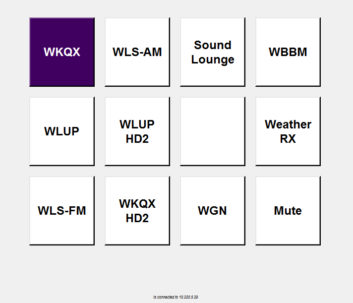
My second project was for the transmitter sites. I developed a temperature sensor (thermometer) that outputs SNMP data for ingestion into my icinga2/Grafana-based “Heads Up Display” in the TOC. I have also developed several types of multistream monitors for web streams, and a studio clock that interfaces with Livewire right now, and WheatNet is in the works.
Additional applications that are possible but not necessarily practical, include an IP-based STL/TSL, decoding HD Radio using a Pi and an SDR dongle, DHCP server, multimedia displays, KODI home theater, etc.
Use your imagination, or as they say, “Imagine the Possibilities.”
RW: Can it be used in networking?
Wright: The Raspberry Pi family, with the exception of the $5 Pi Zero, support networking. The currently available versions 3B and 4 support both wired and wireless networking, with the 3 at 100 Mbps and the 4 at gigabit speed.
In addition there are third-party hardware additions that allow POE (Power over Ethernet) of the Pi. Since it is a full-blown Linux system, you can do anything that Linux is capable of.
RW: Its simplicity, small footprint and low power consumption would seem to make it a natural for backup uses. Tell us about that.
Wright: Not just backup uses. I have a web server that has been running on a Pi original model for years quite happily.
I did an analysis of PC vs Pi, since any of the projects discussed in the session can and will run on PC hardware as well. In bottom line terms, what can be done for $900 with a PC can be done for $130 with a Pi and is a tiny fraction of the space. A typical PC consumes 150 W of power and the Pi is 5 W. Do the math — total cost of ownership.
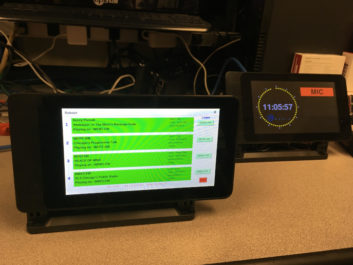
RW: Have you worked with the new Raspberry Pi 4 yet?
Wright: I just purchased a half dozen of the Raspberry Pi Version 4 in all the various models (1 GB, 2 GB and 4 GB RAM versions) specifically to use at the WBA for hands-on demonstrations. It took four trips to Micro Center to get them all, because they cannot keep them in stock. Needless to say they are a popular commodity. Be warned, the Version 4 Pi requires a different HDMI cable, power adapter and case, since, following the Apple mantra, why would we want to be backwards hardware-compatible. The larger memory footprint is really only necessary in the minority of applications since Linux runs quite fine with the standard 1 GB. I can imagine that with the dual HDMI ports on the Version 4, the increased CPU speed and cores, and the gigabit networking capability, the Pi could even be used as a digital audio workstation. I have successfully run, as an experiment, a 24-track editor on the Pi 3, so the 4 is even better.
I am setting up all the demo systems with VNC access and Webmin access via HTML, so attendees can use their laptops to play with the systems as if it were a local PC.
[Subscribe to our newsletter and get it delivered right to your inbox.]







